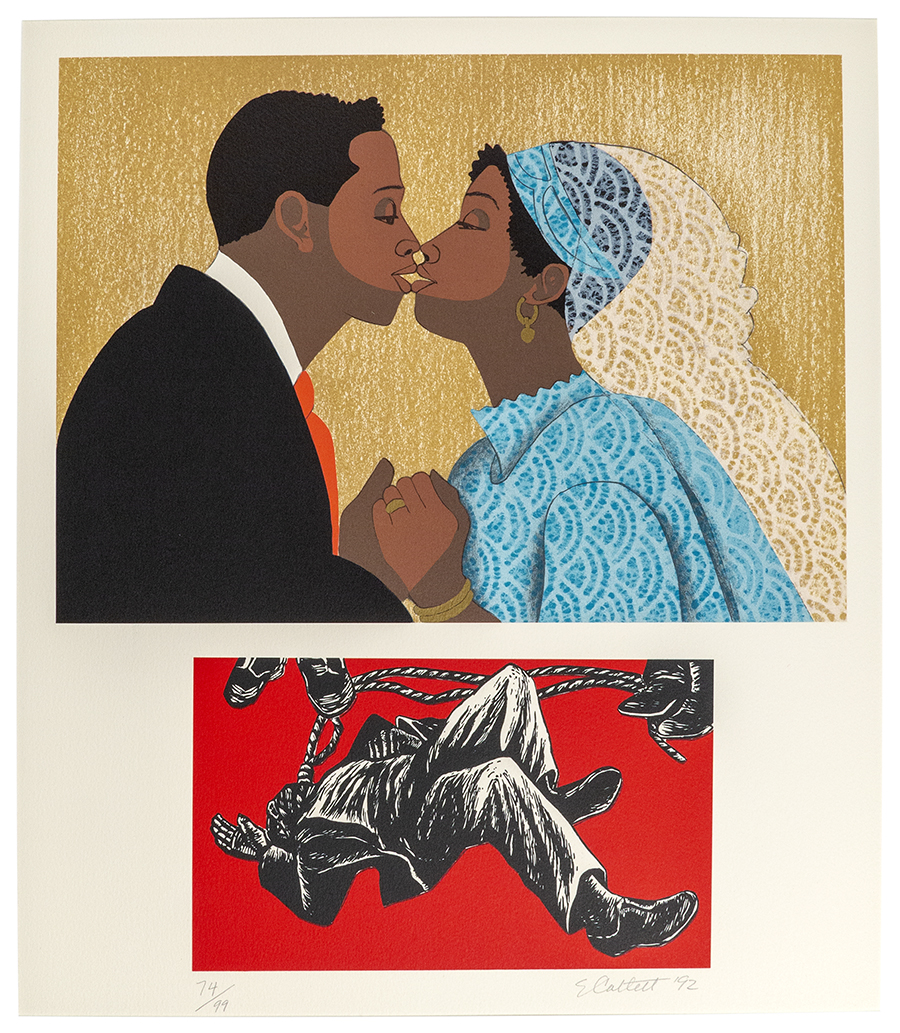In early 2021, the McClung Museum will debut a temporary exhibition called Women’s Work, guest curated by Emma Grace Thompson. Thompson served as the Arts & Culture Curatorial Graduate Research Assistant before finishing her Master’s degree in History last Spring. The exhibition will showcase art work from the McClung’s collection that was created by women. Included will be the powerful print by Elizabeth Catlett titled To Marry.
Elizabeth Catlett was an African American artist whose unparalleled body of politically charged sculpture and graphics mark her as one of the most notable American artists of the 20th century. Catlett was unique in her view on the purpose of art by determining to make her art give voice to the enduring dignity, strength, and achievements of black women and other disenfranchised peoples.
To Marry is based on the following verse from the 1942 poem For My People by Margaret Walker (here is a wonderful reading of the poem in its entirety).
For the boys and girls who grew in spite of these things to
be man and woman, to laugh and dance and sing and
play and drink their wine and religion and success, to
marry their playmates and bear children and then die
of consumption and anemia and lynching;
When asked about including this artwork in her exhibition, curator Emma Grace Thompson states: “To Marry is an integral part of Women’s Work as it is the first piece of art by a Black woman to be purchased by the McClung Museum. Its inclusion in the exhibition is reflective of a continuing mission to include the important, and often ignored, voices of marginalized communities.”
Within the art world, there has been much critique about the historic (and on-going) exclusion of women artists from the major art markets, and museum collections and exhibitions. This marginalization impacts women of color more than their white counterparts. Thompson’s astute observation, and how that has played out in the collecting history of the McClung, highlights the need for the focus of our own institution to bring in more art by diverse artists, and especially women.
